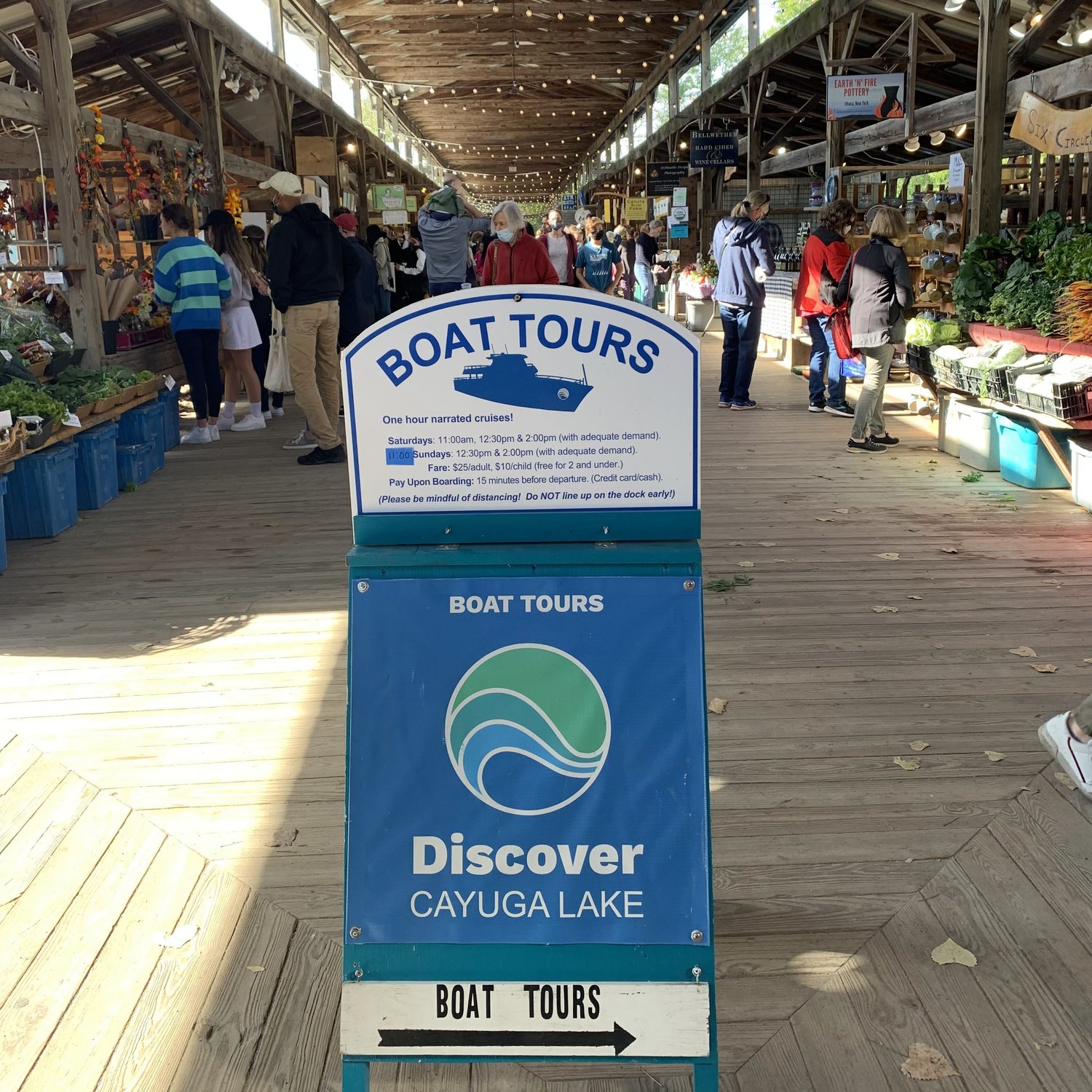

The MV Teal decorated by beautiful fall leaves all around the Allan H. Treman Marina State Park
The fertility of the land around the Finger Lakes was first noticed by the indigenous people to the land, the Haudenesaunee, members of the league of six nations in upstate New York, also known as the Iroquois Confederacy. The Haudenosaunee cultivated the “Three Sisters”- a planting system of growing corn, beans and squash in close proximity to each other as they would grow better together rather than alone. During the Revolutionary War, when George Washington sent John Sullivan and his army to extricate the natives from the region, soldiers recognized the quality of crops that were being grown around the lakes. Many of those soldiers later acquired land and started farms of their own.
Today, as you drive around the Finger Lakes, particularly around Seneca and Cayuga Lake, it’s hard not to notice the numerous amounts of wineries, cideries, breweries as well as vegetable and fruit tree farms. There is a scientific reason for why the land around these iconically long, skinny and deep lakes is so fertile for growing crops. The retreat of the glaciers during the last Ice Age, left behind long, deep valleys, once shallow river beds The depth of these lakes helps create a moderating effect on the shoreline that would make it otherwise difficult to grow crops in the cool-climate region. Grape growing in the Finger Lakes is a great example of plants benefiting from the lake’s unique micro-climate. The cold water stored in the deep lakes over-winter means budding is late for grapes, reducing the risk of a spring frost. In the fall, the lakes have spent all summer being warmed by the sun, enabling the grapes to stay on the vine a little longer, extending the growing season until later in the fall.

Guests along the Fall Foliage Eco Cruise enjoying the colorful leaves along the Cayuga Lake shoreline
Harvest season in the Finger Lakes wine country begins mid-August and, depending on the weather and grape quality, harvest can continue on into November and sometimes as late as January for a famous “ice-wine.” If you are visiting the area this fall, make sure to stop by a local Finger Lakes Winery and try a glass of Riesling. Thanks to the cool weather in the Finger Lakes, it’s an optimal place to produce this wine varietal, as it can ripen slowly and develop rich and fresh aromas. Other notable varieties around the Finger Lakes region are Gewurztraminer, Chardonnay, Pinot Noir Grüner Veltliner, Pinot Gris, and Cabernet Franc.
Apple orchards and cideries are also a staple around the Finger Lakes in the fall with an extensive apple industry between the Finger Lakes and Lake Ontario in the North. Cornell University has a lot to do with this as they have been breeding apple varieties in orchards in Geneva, NY since 1880, releasing more than 60 varieties so far.
There are many ways to enjoy apple season around the Finger Lakes, with many Farmers Markets and U-Pick Apple Farms to taste your way through endless varieties, including U-Pick Farms within the Cornell Cooperative Extension. If you are around the Ithaca area exploring this Fall, check out one of our local cideries for tastings, South Hill Cider or Finger Lake Cider House. And your can’t go wrong visiting the Ithaca Farmer’s Market, with over 130 active vendors all producing crops within a 30 mile radius of the Market pavilion. From there, you can join Discover Cayuga Lake’s last weekend of Farmers Market Boat Cruises on October 22 and 23!

Discover Cayuga Lake’s sign at the Ithaca Farmer’s Market on Saturdays and Sundays
Join us to celebrate the beautiful fall foliage at its peak for the MV Teal’s last week of Fall Foliage Eco Cruises this season. You can learn a lot more about the natural and cultural history of the Finger Lakes in relation to the trees and agriculture so pertinent to the fall season. Bring a bottle of local cider or wine, and we hope to see you on-board!

